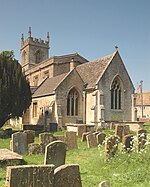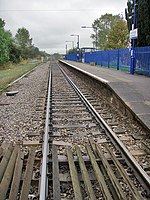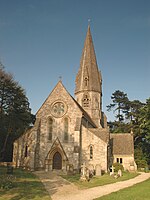Chilson
Civil parishes in OxfordshireHamlets in OxfordshireOxfordshire geography stubsUse British English from August 2015West Oxfordshire District

Chilson is a hamlet and civil parish in the Evenlode Valley in West Oxfordshire, England, about 4+1⁄2 miles (7 km) south of Chipping Norton. The civil parish also includes the hamlet of Shorthampton, about 2⁄5 mile (1 km) north east of Chilson. The 2011 Census recorded the parish's population as 141. The toponym, first recorded as Cildestuna in about 1200, is derived from the Old English ċildes tūn, meaning "estate of the young nobleman".
Excerpt from the Wikipedia article Chilson (License: CC BY-SA 3.0, Authors, Images).Chilson
Pudlicote Lane, West Oxfordshire
Geographical coordinates (GPS) Address Nearby Places Show on map
Geographical coordinates (GPS)
| Latitude | Longitude |
|---|---|
| N 51.873 ° | E -1.536 ° |
Address
Pudlicote Lane
Pudlicote Lane
OX7 3HU West Oxfordshire
England, United Kingdom
Open on Google Maps











